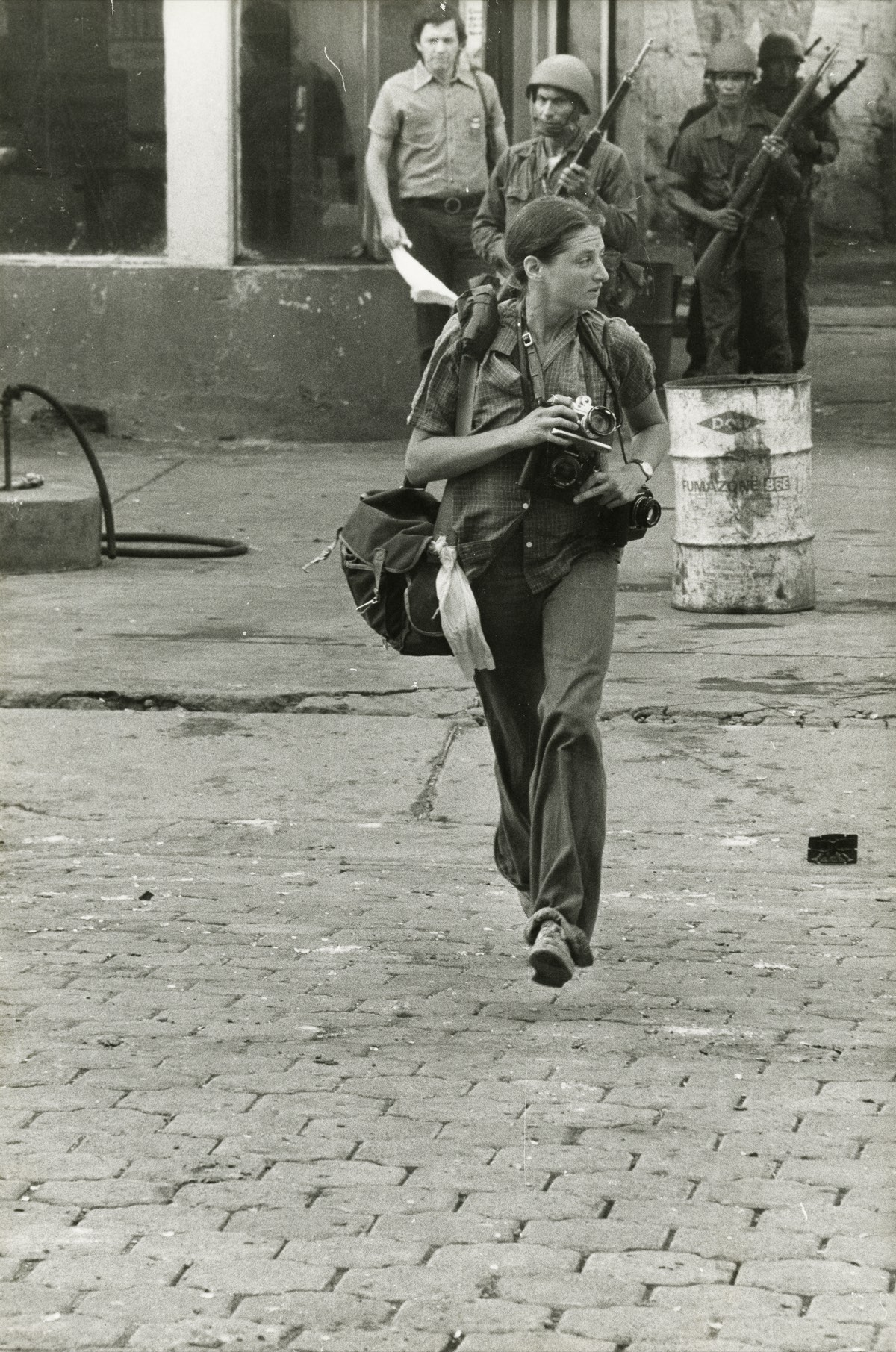Susan Meiselas photography has made an indelible mark on the world of documentary photography, particularly through her acclaimed work “44 Irving Street, Cambridge, MA.” This captivating series, displayed at the Harvard Art Museums, captures the essence of a vibrant community through the lens of her camera. In 1971, while pursuing her master’s degree at Harvard, Meiselas embarked on this groundbreaking project, illustrating how personal narratives can intertwine with broader socio-cultural contexts. Her journey into photography was spurred by a desire to connect with her neighbors, revealing the intimate stories behind each subject she photographed. With her unique approach, Susan Meiselas has not only showcased powerful images but also opened dialogues about representation and connection, solidifying her role as a pioneer in the field of documentary photography.
Renowned for her compelling visual storytelling, Susan Meiselas has carved a niche within the realm of image-making, especially exemplified in her exhibition “44 Irving Street, Cambridge, MA.” This collection reflects a nuanced exploration of community life in Cambridge during the early 1970s, highlighting the interplay between individuals’ personal spaces and their broader social narratives. As a prominent documentary filmmaker and photographer, Meiselas’s work pushes the boundaries of conventional photography, emphasizing collaboration and connection with her subjects. Her approach not only captures candid moments but also invites viewers to engage with the underlying stories of identity and belonging. Through exhibitions such as this, Meiselas continues to influence the discourse surrounding the art of photography and its role in societal representation.
The Impact of Susan Meiselas’ Early Work
Susan Meiselas’ early photography work, particularly her series ’44 Irving Street, Cambridge, MA,’ marks a significant turning point not just in her career, but in the field of documentary photography itself. The series, captured during her time as a student, allowed her to engage deeply with the lives of her neighbors, transforming a simple educational project into a profound exploration of identity and community. Through her lens, Meiselas created a tapestry of stories that revealed the rich personalities and experiences residing within the walls of her boarding house. This focus not only opened up new avenues in her artistic practice but also set the stage for her later work that addressed socio-political themes.
The essence of Meiselas’ early photographs lies in her ability to personalize her subjects, showcasing both their individuality and the shared essence of human experience. Each photograph from ’44 Irving Street’ is imbued with emotion, presenting her subjects in their intimate environments, enhancing the narrative quality of her documentary photography. By emphasizing these personal connections, she started a dialogue about representation and power in photography that would become a hallmark of her entire career. In a way, this series not only shaped Meiselas as an artist, but also challenged the norms of documentary practice, encouraging other photographers to explore the interconnectedness between their subjects and themselves.
Exploring Documentary Photography at Harvard Art Museums
The ongoing exhibition at the Harvard Art Museums featuring Susan Meiselas’ ’44 Irving Street, Cambridge, MA’ is a crucial contribution to the discourse on documentary photography as an art form. This exhibition showcases the dynamic interplay between artistic expression and social commentary, a hallmark of Meiselas’ work. Attendees are not just passive viewers; they engage with the raw narratives captured in her photographs, which are enhanced by accompanying visitor interactions. Such exhibitions serve to educate the public on the importance of context in understanding documentary art, fostering a deeper appreciation for the photographer’s intent and the subjects’ realities.
Moreover, the inclusion of interactive elements such as QR codes linking to personal reflections from subjects allows visitors to experience the emotional depth of Meiselas’ photography. This innovative approach highlights how photography can serve as a bridge to understanding and empathy. In presenting her work within an academic institution like Harvard, the exhibition also emphasizes the role of photography in scholarly pursuits, illustrating how artistic practices can be intertwined with educational objectives. Such initiatives not only elevate the conversation around documentary photography but also solidify Meiselas’ legacy in the canon of contemporary art.
The Journey of Susan Meiselas as an Artist
Susan Meiselas began her journey into photography unexpectedly, using her early work to connect with others rather than simply as a medium for artistic expression. Initially, her pursuit of a master’s degree in education led her to photography as a means of understanding her environment and the people within it. Through the ’44 Irving Street’ series, she turned the camera into a tool for connection, transforming her classmates and neighbors into collaborators in the storytelling process. This transformative experience not only defined her early career but also guided her future projects, laying the groundwork for her exploration of more complex themes in documentary photography.
As her career advanced, Meiselas continued to build upon the foundational experiences gathered from ’44 Irving Street.’ Her subsequent works, featuring subjects in politically charged environments and social upheavals, reflect the same themes of connection and representation that she honed during her early photographic explorations. The evolution of Meiselas’ artistic identity underscores her commitment to the narratives of marginalized communities, showing how her initial interactions within her boarding house have reverberated throughout her life’s work. Today, her influence remains prominent in contemporary photography, inspiring new generations to approach documentary work through a lens of empathy and depth.
Engagement through Photography: Lessons from 44 Irving Street
Meiselas’ ’44 Irving Street’ not only captured the essence of individual lives but also serves as a compelling study on the engagement between photographer and subject. Her method of inviting residents to share personal stories and feelings about their portraits adds a unique layer to the artistic process. This interaction not only democratizes the photographic narrative but fosters a sense of ownership and agency among the subjects. By prioritizing these voices, Meiselas highlights the importance of collaboration in documentary photography, reminding us that each image is a co-creation rather than just the vision of the photographer.
These lessons of engagement are crucial not just for Meiselas’ personal practice but for all photographers aspiring to capture authentic narratives. Emphasizing communication and empathy ensures that the subjects are not merely objects of observation, but integral components of the storytelling process. In her exploration of social documentaries, her commitment to this philosophy has broad implications for ethical photography. As we look to the future of documentary photography, Meiselas’ work continues to challenge practitioners to foster collaborative experiences with their subjects, ultimately enriching the stories told through this powerful medium.
The Legacy of Susan Meiselas in Documenting Communities
Susan Meiselas’ impact on documentary photography extends beyond the individual photographs; it encompasses a legacy of documenting communities and fostering connections that resonate through her work. Her meticulous approach to capturing the essence of her subjects relates not only to their visual representation but also to their personal stories and societal contexts. Through exhibitions like ’44 Irving Street, Cambridge, MA’ at the Harvard Art Museums, her photographs bring forth individual narratives while reflecting larger social dynamics. This dual focus solidifies her role as both an artist and a social commentator in the field of photography.
Moreover, her work in documenting communities across various contexts serves as a call to action for future photographers to recognize the power held within their lenses. The lessons of empathy, respect, and collaboration echo through her career, urging others to approach photography with a mindful awareness of the subjects’ realities. This understanding fosters a greater appreciation for the stories being told and challenges photographers to be thoughtful practitioners in their art. Consequently, Meiselas’ legacy continues to inspire not just individual photographers, but also entire movements within documentary photography, advocating for a more inclusive and connected world.
Navigating the Ethics of Representation in Photography
One of the most profound impacts of Susan Meiselas’ work, particularly through her early series ’44 Irving Street,’ revolves around the complex ethics of representation in photography. As she engages with her subjects, Meiselas fosters a sense of partnership that encourages honest storytelling while highlighting the vulnerabilities inherent in being photographed. Her willingness to share the results with her subjects and reflect on their feedback creates a dialogue that enriches the viewer’s understanding of each image. This intricate balance of power and representation is crucial in documentary photography, and Meiselas emphasizes the need for photographers to be conscious of their role in shaping narratives.
Navigating these ethical dimensions is not merely an academic concern; it is essential for building trust and respect between the photographer and the subjects. In the age of digital media and overwhelming imagery, Meiselas’ insistence on collaborative processes challenges photographers to consider the implications of their portrayals. By advocating for transparency and mutual engagement, she sets a precedent for ethical practices in the field, steering the discourse toward a more inclusive and responsible approach to documentary photography.
Exploring the Personal and Political in Meiselas’ Work
The photographs from Susan Meiselas’ ’44 Irving Street, Cambridge, MA’ serve as a fascinating intersection of the personal and the political. While she initially approached her subjects with a personal intent to form connections, the wider political narratives of the time inevitably seeped into her work. Meiselas’ dual focus allows viewers to appreciate her neighbors’ individual experiences while also reminding them of the broader social and political contexts that shape those experiences. This synergy enriches the narrative quality of her work, encouraging viewers to see beyond the surface of the images.
As she continued her career, Meiselas found herself drawn into more overtly political subjects, using her lens to document social movements and conflicts worldwide. This progression showcases her commitment to justice and highlighting underrepresented voices. The threads of individuality and larger societal issues weave seamlessly through her work, urging audiences to consider both the personal stories behind the images and the collective narratives shaping those lives. In doing so, Meiselas champions a more profound understanding of the human experience, one that recognizes the interconnectedness of personal identities with global narratives.
Photographic Innovation Through the Lens of Susan Meiselas
Innovation has always been a driving force in Susan Meiselas’ approach to photography, particularly in how she integrates technology and narrative into her work. In her presentation of ’44 Irving Street, Cambridge, MA,’ the inclusion of interactive elements such as QR codes linking to personal reflections exemplifies her forward-thinking approach. This blend of technology and storytelling not only enhances the viewer’s experience but also invites a more profound engagement with the material. By doing so, Meiselas pushes the boundaries of traditional exhibitions, encouraging audiences to interact with her work in ways that resonate personally.
Moreover, her use of various photographic techniques throughout her career underscores her innovative spirit. Whether utilizing black-and-white film for her early works or exploring new media for her collaborative projects, Meiselas continually adapts her approach to convey her vision effectively. This willingness to experiment with different styles and methods sets her apart as a contemporary artist who not only documents reality but also shapes the medium itself. By embracing a range of tools and formats, Meiselas demonstrates that documentary photography is a living, evolving art form that can capture the complexities of human life.
Education and Storytelling: Meiselas’ Teaching Philosophy
Susan Meiselas’ work in education reflects her belief in photography as a medium for storytelling and connection. Throughout her career, she has emphasized the importance of empowering her students to use imagery as a way to articulate their narratives and the stories of their communities. By inspiring students in schools with experimental programs, she encourages them to see photography not only as an artistic pursuit but as a powerful tool for social engagement and personal expression. Her approach emphasizes the idea that everyone can tell a story worth sharing.
Furthermore, Meiselas’ commitment to education showcases her understanding of the profound impact that visual literacy can have on personal development and community building. By integrating photography into her teaching, she fosters a space where students can explore their identities and learn about their surroundings through a creative lens. This perspective not only enriches their educational experience but also instills a sense of cultural awareness and responsibility. In this way, Meiselas’ educational philosophy extends her influence beyond her own work, cultivating a new generation of photographers who value the intersections of art, narrative, and social consciousness.
Frequently Asked Questions
What is the significance of Susan Meiselas’ photography series ’44 Irving Street, Cambridge, MA’?
Susan Meiselas’ photography series ’44 Irving Street, Cambridge, MA’ is significant because it marks the beginning of her impactful career in documentary photography. Created while she was a student at Harvard, the series allows viewers to connect deeply with the personal stories of the residents in her boarding house, showcasing her emerging style that emphasizes connection and representation.
Where can I view Susan Meiselas’ work ’44 Irving Street, Cambridge, MA’?
You can view Susan Meiselas’ ’44 Irving Street, Cambridge, MA’ at the Harvard Art Museums, where the exhibition showcases her black-and-white prints from this early body of documentary photography. The exhibition is currently open and runs through April 6.
How did Susan Meiselas’ ’44 Irving Street’ project influence her later work in documentary photography?
The ’44 Irving Street’ project was pivotal in shaping Susan Meiselas’ approach to documentary photography. It introduced her to the power of personal connection and the complexities of representation, themes that have persisted throughout her career. Meiselas’ interactions with her subjects and their reflective responses added depth to her understanding of photography as a means of storytelling.
What themes does Susan Meiselas explore in her photography, particularly in ’44 Irving Street, Cambridge, MA’?
In ’44 Irving Street, Cambridge, MA’, Susan Meiselas explores themes of personal connection, identity, and the power dynamics of representation. Her work reflects a fascination with how individuals relate to their spaces and how they perceive themselves through the lens of photography, a topic she later expanded upon in her book ‘Collaboration: A Potential History of Photography’.
What can viewers expect to experience at the ’44 Irving Street’ exhibition by Susan Meiselas?
At the ’44 Irving Street’ exhibition by Susan Meiselas at the Harvard Art Museums, viewers can expect to experience her intimate black-and-white portraits of housemates, accompanied by personal letters that reveal their feelings about the images. This interactive element enhances the exhibition by inviting visitors to reflect on themes of identity and connection through photography.
Why was Susan Meiselas interested in documentary photography during her time at Harvard?
Susan Meiselas became interested in documentary photography during her time at Harvard as she sought a medium to connect with others and share their stories. Her initial projects, like ’44 Irving Street, Cambridge, MA’, allowed her to explore the sociological aspects of photography, using it as a tool for understanding human experiences and interactions.
How does Susan Meiselas’ documentary photography differ from traditional photography?
Susan Meiselas’ documentary photography differs from traditional photography in its emphasis on storytelling, personal interaction, and the ethical complexities of representation. Instead of merely capturing scenes, her work invites viewers to engage with the narratives and emotions of her subjects, ensuring a more collaborative and participative approach.
What impact did ’44 Irving Street, Cambridge, MA’ have on Susan Meiselas’ career in photography?
The ’44 Irving Street, Cambridge, MA’ series had a profound impact on Susan Meiselas’ career by establishing her as a thoughtful and engaged documentary photographer. It laid the foundation for her later work, which continued to prioritize human connection, narrative depth, and the socio-political implications of photography.
What kind of storytelling techniques does Susan Meiselas use in her documentary photography?
In her documentary photography, including the ’44 Irving Street’ series, Susan Meiselas employs storytelling techniques that focus on personal narratives and emotional responses. By capturing portraits of her subjects and their environments, as well as incorporating their written reflections, she creates a rich tapestry of interconnected stories that resonate with viewers.
How can I learn more about Susan Meiselas and her documentary photography?
To learn more about Susan Meiselas and her documentary photography, including her notable projects like ’44 Irving Street, Cambridge, MA’, visiting the Harvard Art Museums’ exhibition is a great start. Additionally, exploring her published works and interviews can provide deeper insights into her artistic philosophy and contributions to the field.
| Key Points |
|---|
| Susan Meiselas started as a photographer while pursuing her master’s degree in education at Harvard. |
| Her significant work ’44 Irving Street, Cambridge, MA’ originated from a class project photographing her boarding house neighbors. |
| Meiselas’s photography focuses on personal connections, highlighting how individuals utilize their spaces. |
| Subject responses to their portraits provide depth to her work, thus transforming the relationship between photographer and subjects. |
| Themes of connection and representation are central to her ongoing work, influencing projects like her collaborative book on photography. |
| Meiselas continued to integrate photography in her education role, emphasizing storytelling and community engagement. |
| Her exhibition at the Harvard Art Museums showcases the impact and evolution of her photographic journey. |
Summary
Susan Meiselas photography encapsulates the power of human connections through visual storytelling. Beginning with her seminal work “44 Irving Street, Cambridge, MA,” Meiselas explored the intricate relationship between the photographer and their subjects, weaving narratives that are rich with personal expression. Through her artistic endeavors, she highlights the value of representation and the collaborative nature of photography, fostering meaningful dialogues and reflections. As seen in her ongoing projects, her passion for connecting with others continues to shape her significant contributions to the field, illustrating how photography can serve as a bridge to understanding and community building.









